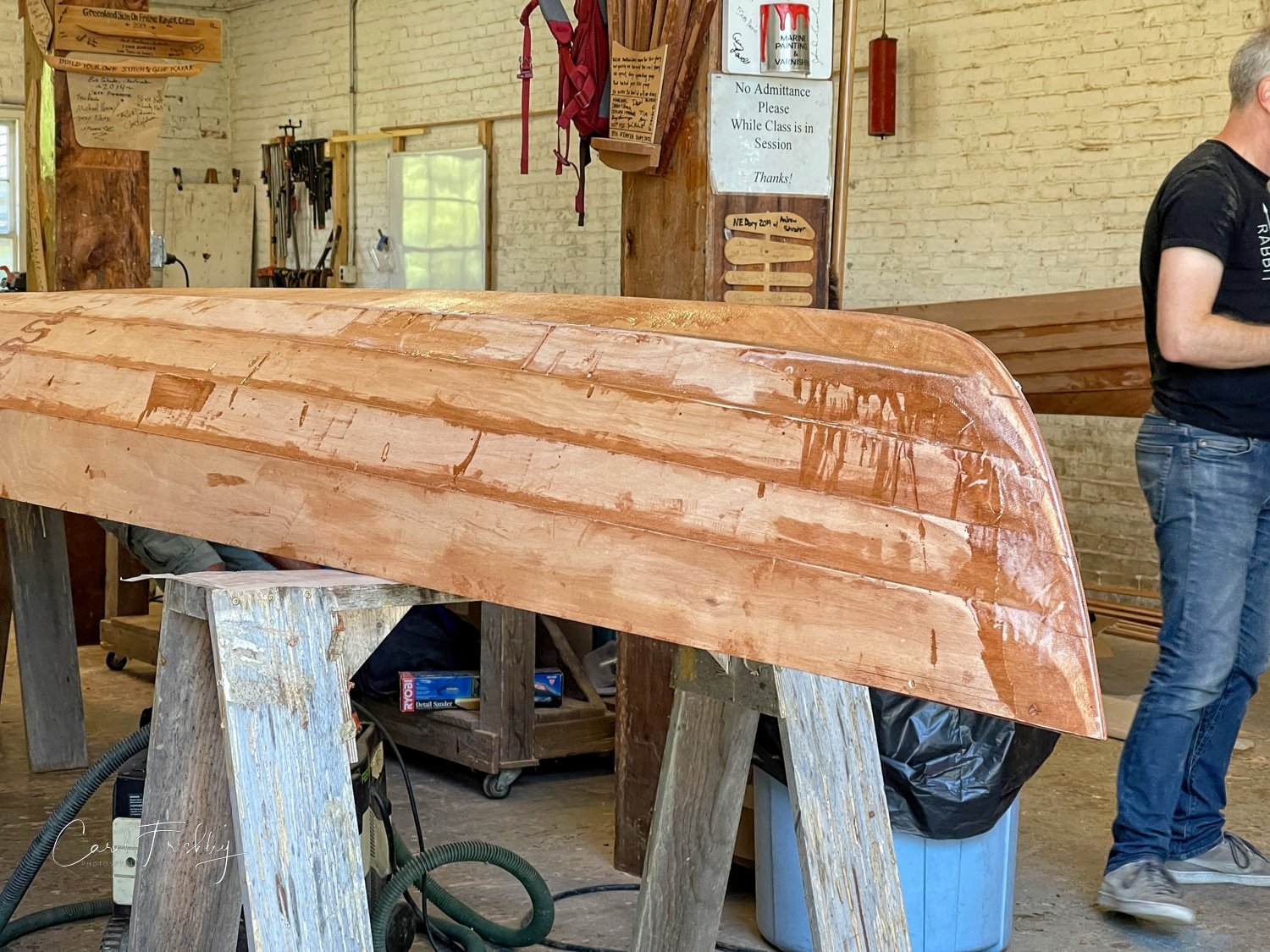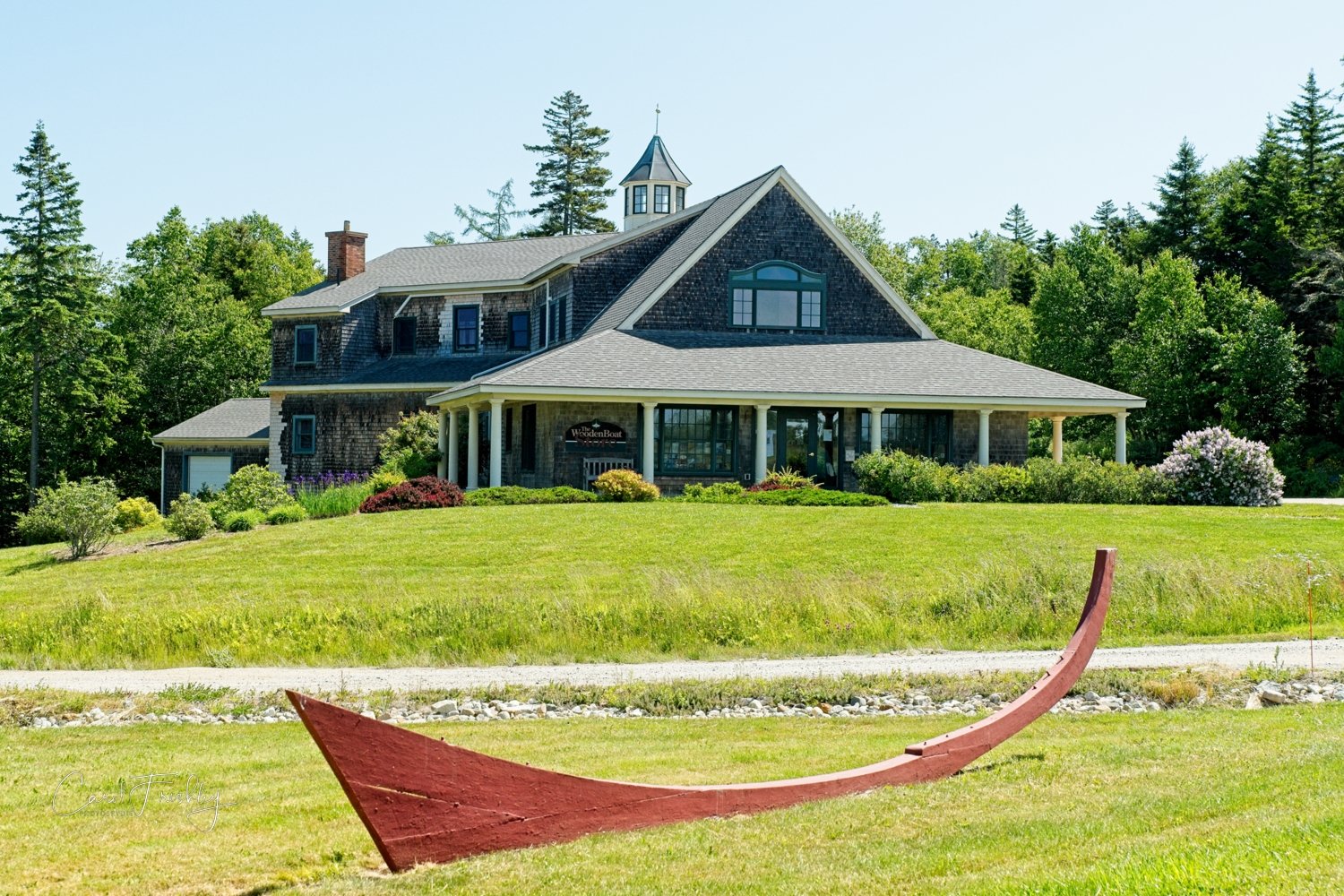Each day all Mary Day guests were invited to go ashore. We were transported by smaller boats and usually had an hour to spend on shore. Our first shore trip was to a rocky beach in a quiet cove where we had our lobster boil. This was, of course, one of the meal highlights of our cruise. Truth be told, however, all of our meals and treats were spectacular.
Disembarking to head for our lobster dinner on the beach.
Pretty sure this was taken during low tide.
We found seating on the rocks and logs.
A lovely tablecloth across a paddle board made a great table to serve up our feast. In addition to lobster there was a salad, hot dogs, hamburgers, corn and potatoes. There was probably a dessert but I was so full of lobster that I did not have any.
Lobster pots steaming.
The delectables were stacked on a bed of seaweed.
Life is good!
I ate two lobsters. I could have had a third! Leftover lobster was part of a dip later in the trip. It seemed like very little food was wasted.
Headed back for the night.
Well captured.
Our second trip ashore was Swan’s Island, a fishing village located 6 miles off Maine’s rugged coast and only accessible by a daily ferry. Home to about 350 year round residents, the main industry is lobster trapping. We had a choice of hiking to the lighthouse or wandering around the dock where the lobsters were brought in. Diane and I chose to stick to the dock.
I was not expecting so much high tech!
Yikes! More rope!
Lobsters are banded as soon as they are brought to shore. The are separated based on whether they are hard or soft shell (soft shell indicates a recently molted lobster). Hard shelled lobsters are worth more because they can handle longer transport distances. Breeding females must be returned to the ocean.
After their arrival inspection, lobsters are put in crates and lowered into oxygenated pools of ocean water to be kept until transported to the mainland.
Lobster traps, or pots as they are sometimes called, are designed to entice lobsters in with bait, usually a salted herring or other fish. Each trap has an easy exit so that smaller fish and lobsters can get out of the trap.
The trap is designed so a lobster enters through a funnel and the netting makes it more difficult for the lobster to get back out. However, quite a few do escape and I heard that up to 90% of lobsters may come and go from the traps! I have not been able to verify that number.
Stacked and ready for pick up by boats.
Lobster traps are weighted and then lowered to the ocean floor. They are suspended to surface buoys. Each owner has their own color coded buoy to identify the the trap belongs to them. As we sailed in Penobscot Bay, we saw hundreds of these colorful buoys.
Salted herring to be put in the traps.
We could see some lovely homes up the hill from the dock area.
Gary chose to hike to the lighthouse and shared a photograph of the cemetery he passed on the way. Nice view as a permanent resting place.
Of course I found flowers.
Returning to Mary Day.
When one is on the deck it is not apparent just how beautiful Mary Day’s bow is. I also like how Steven capture both the anchor on the side of the schooner with the other one in the water.
Our third trip ashore was to visit the WoodenBoat School which is located in Brooklin, ME. The schools was started in 1981 and offers classes for wooden boat enthusiasts in how to design, construct, maintain and repair their own wooden boats. Their students come from around the world.
There were large areas such as this one where boats were in various stages of construction.
Interesting shape.
I noticed that several tents were shaped like upside down boats. Very cool.
This is a boat rest.
I believe this larger building is home to the publication for WoodenBoat. The camps grounds were lovely and there was a section where students could camp while working on their boats.
Buoys are a common yard decoration along the coast of Maine. This was one of the best displays we saw.
Twas another awesome day!








































